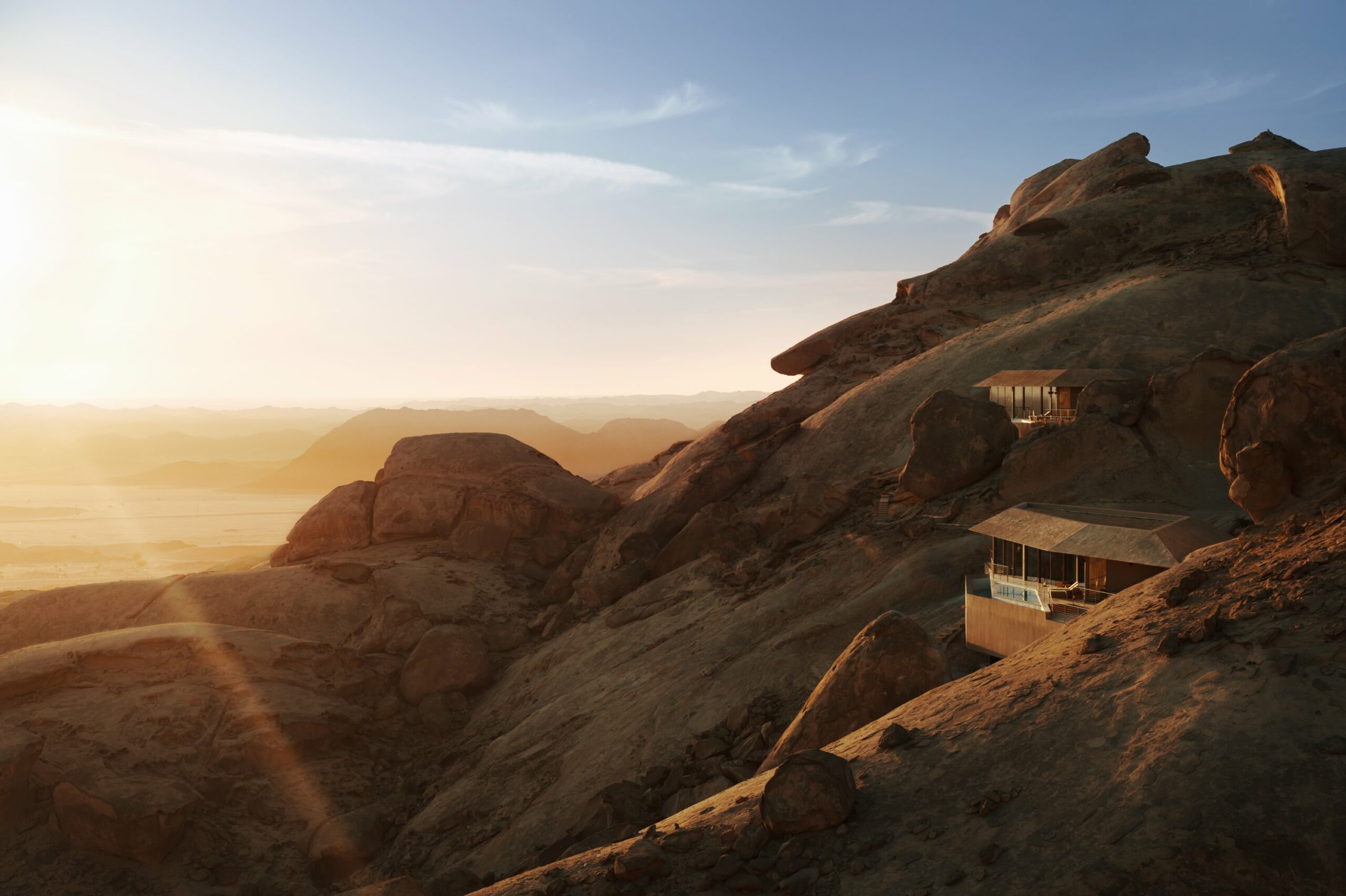The rugged resort redefines expectations as a rock-hewn hotel
Saudi Arabia, a land rich in ancient history and diverse landscapes, is rapidly emerging as a global tourism hotspot. Among its most ambitious developments is the Red Sea Project, an initiative transforming the Kingdom’s western coastline into a luxury destination that blends natural beauty with cutting-edge architecture. Within this ambitious development lies Desert Rock, featuring rooms and restaurants ingeniously integrated into the rugged face of the rust-coloured mountains.
A nod to the past, a vision for the future
For millennia, humans have carved homes into caves for shelter and protection, from the underground city of Göreme in Cappadocia, Türkiye, to the ancient Nabataean marvels of Petra, Jordan, and the Yaodong caves of China. Now, this timeless practice has been applied to Desert Rock, the latest luxury resort from the burgeoning hospitality brand Red Sea Global. As its name suggests, the resort features cavernous accommodations meticulously hewn into a rugged massif (group of mountains), far from the crystalline waters of the Red Sea coast.
Arrival and expectations
A 20-minute drive from Red Sea International Airport leads visitors to a secluded wadi, which hides Desert Rock from view. Guests navigate the winding valley, following a trail of lanterns to the arrival pavilion, where a warm welcome from a dedicated villa host awaits.
As guests step into the pavilion, they are welcomed by the resonant voice of Rashed Hamed Aljohani, a local village elder. His recorded greeting echoes through the surrounding rocks, harmonised by the soulful strains of atmospheric Arabic music, setting the stage for the serene sojourn that’s about to unfold.
Spanning 30,000 square meters, the resort requires electric buggies to transport guests from the desert floor to the mountain escarpments, passing sparse desert vegetation along the way to their abodes.
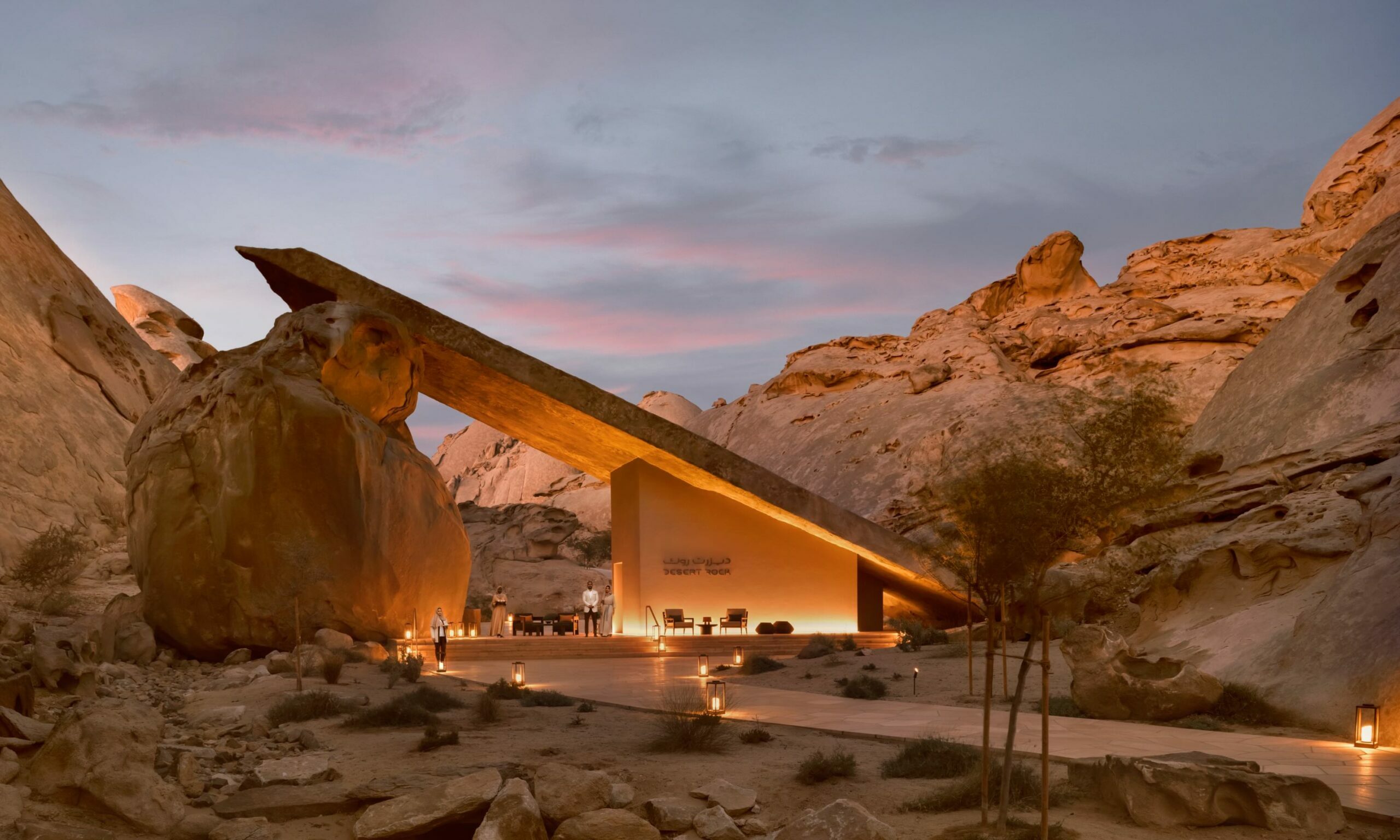
Caves and crevices
Seamlessly integrated into the rugged terrain, Desert Rock offers 54 villas and 10 suites, all built into or upon the rock. Crafted by Oppenheim Architecture, accommodations range from spacious one- and two-bedroom Wadi Villas—featuring private pools discreetly camouflaged within the canyon floor—to Cliff Hanging Villas, which are dramatically suspended along the mountain’s edge, offering sweeping views of the desert landscape.
Perched high above the valley, the ten Mountain Cave Suites are carved deep into the rock, each featuring a private plunge pool. Meanwhile, the Mountain Crevice Villas teeter precariously between granite pinnacles, boasting infinity-style pools with perfect panoramas over the volcanic valley. For those seeking ultimate exclusivity, these accommodations can be combined to create a private resort-within-a-resort experience. At the pinnacle of indulgence, the Royal Villa, a three-bedroom sanctuary, is the ideal choice for families or special celebrations.
Bathrooms showcase polished stonework, featuring curved bathtubs and double sinks, juxtaposed against textured walls, rugged woodwork, and bronze accents. Natural materials and earthy tones dominate the aesthetic, while floor-to-ceiling windows dissolve the barrier between the human intervention indoors and the raw beauty of nature outside.
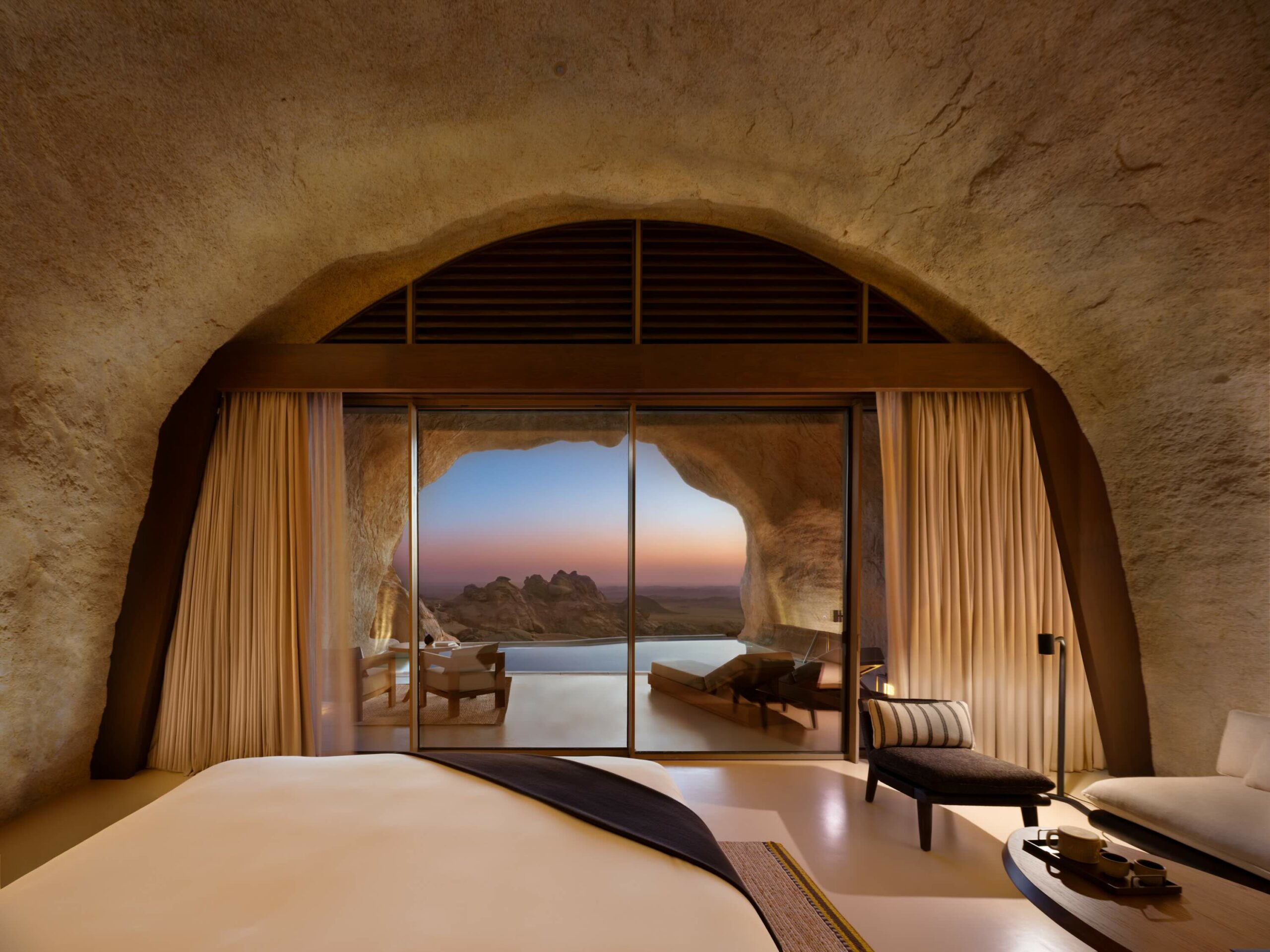
Activities and excitement
Desert Rock is an adventurer’s paradise, offering thrill-seeking activities such as abseiling, climbing, zip-lining, and a daring via ferrata that allows guests to scale the escarpment. Families can embark on guided cultural hikes, astronomy sessions, and nature walks.
Ideal for audiophiles, Desert Rock’s analogue room houses a growing collection of over 400 vinyl records, featuring everything from Daft Punk to The Weeknd. Purists will appreciate the $80,000 Bang & Olufsen sound system, one of only two in the world—the other being owned by Crown Prince Mohammed bin Salman.
Recreational offerings include desert padel, desert golf, a creative kids’ club, and a state-of-the-art Technogym overlooking the lagoon-like waters of the resort’s expansive family pool.
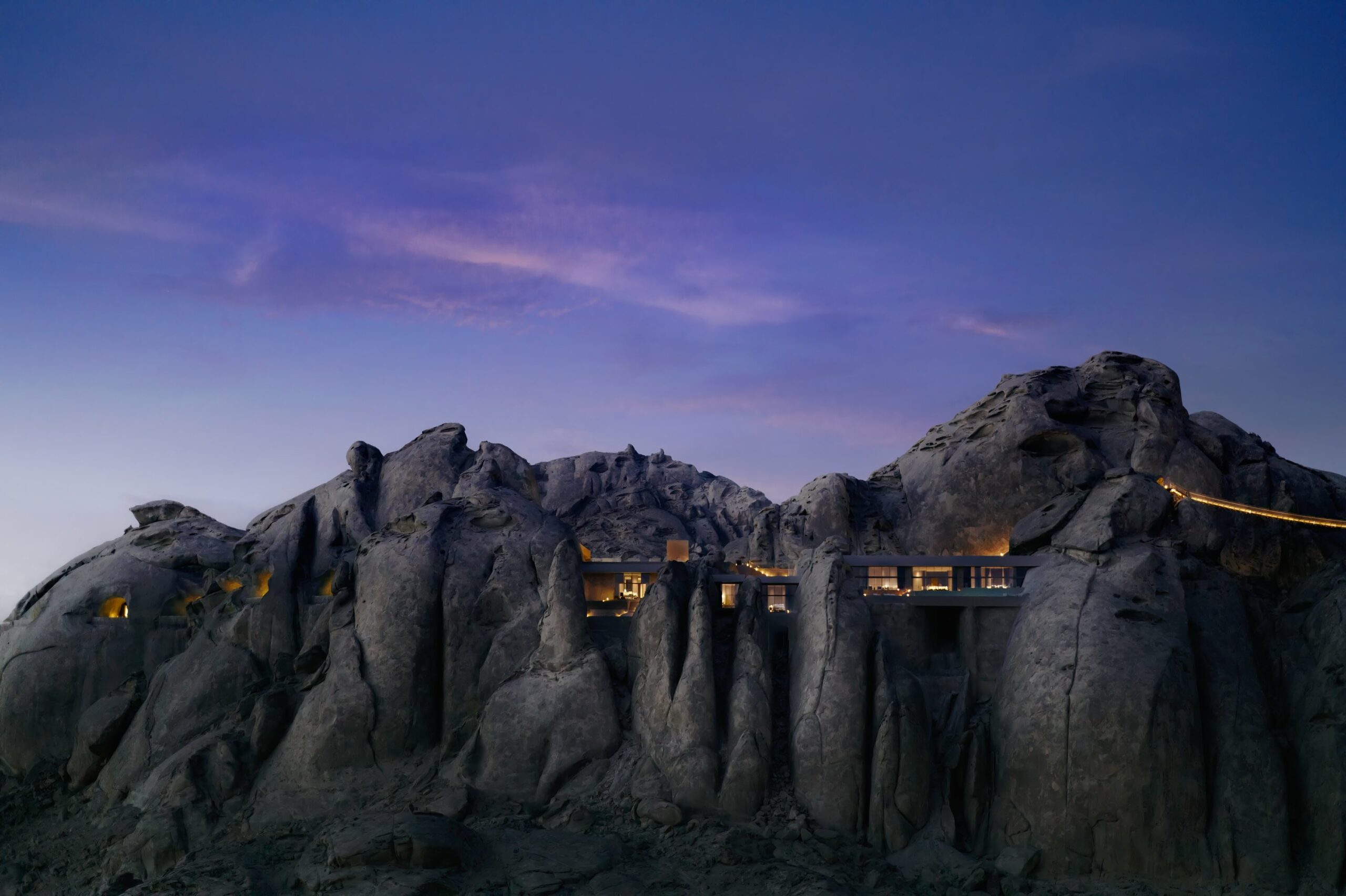
Desert dining
Desert Rock’s six restaurants and bars combine traditional cooking methods with modern innovations while drawing inspiration from the surrounding landscape. Nyra, helmed by acclaimed chef Osman Sezener, showcases wood-fired cooking and seasonal ingredients through expert sourcing and delicious delicacies such as tender beef tongue.
At Mica, mocktails echo Nyra’s culinary philosophy, blending alchemic flavours that honour the raw essence of Desert Rock. Outdoor fire pits warm the evening air, while indoor bar seating puts the focus on the marvellous mixology.
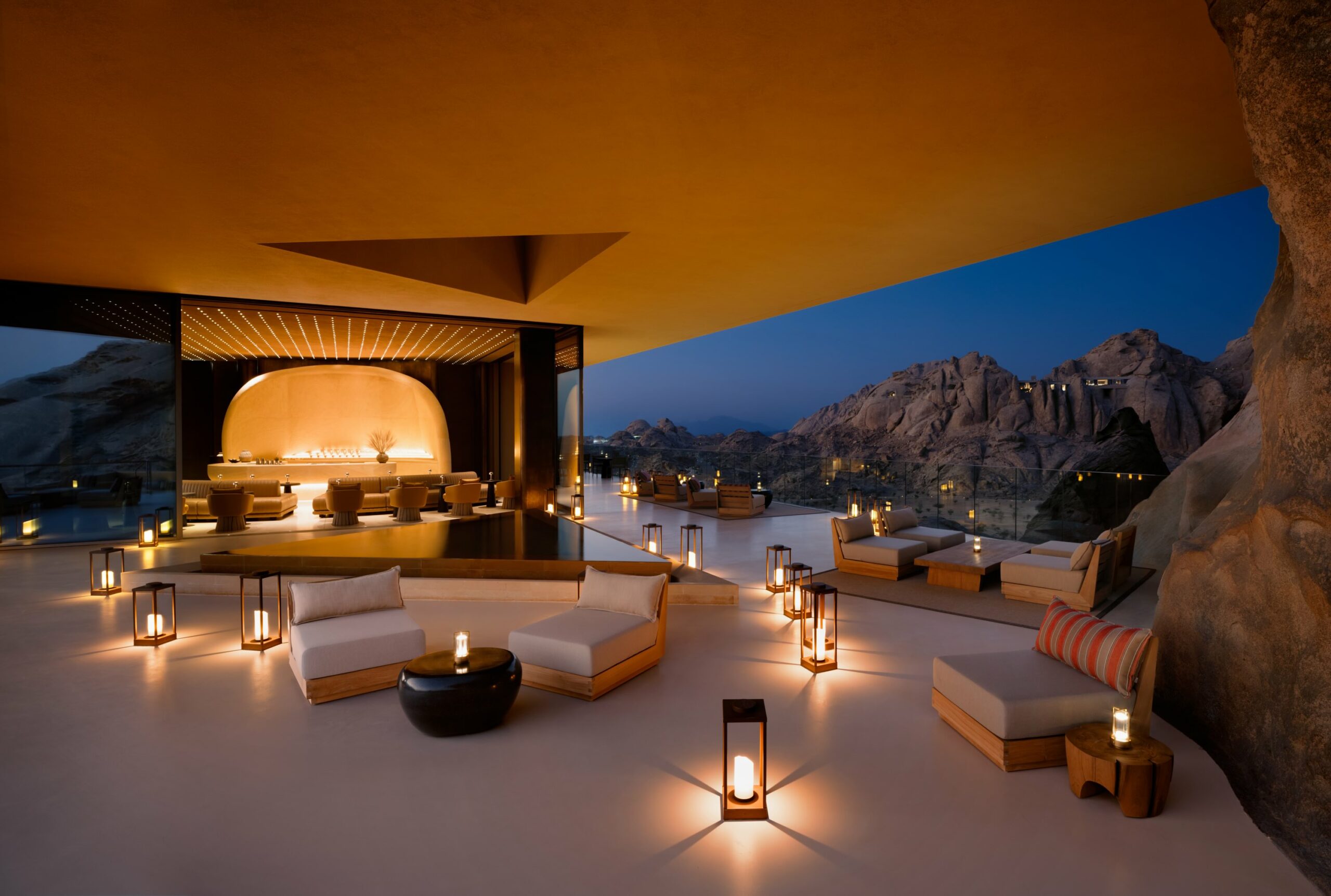
All-day-dining restaurant Basalt offers a modern take on Indian cuisine, enhanced by live music, dance, and fire performances. While Wadi pairs Peruvian flavours with poolside relaxation and live DJ sets. The Library offers afternoon tea, coffee, and cakes before transforming into a sultry nightspot for smoky mocktails and jazz music.
Perched high above the resort, The Observatory is a secret haven accessed via a 120-meter suspension bridge and a 630-step climb that leads to the highest point in the Red Sea region. Here, the evening centres around sunset sips and shisha as the vast desert expanse dissipates into the night. Believe us when we say, it’s worth the climb!
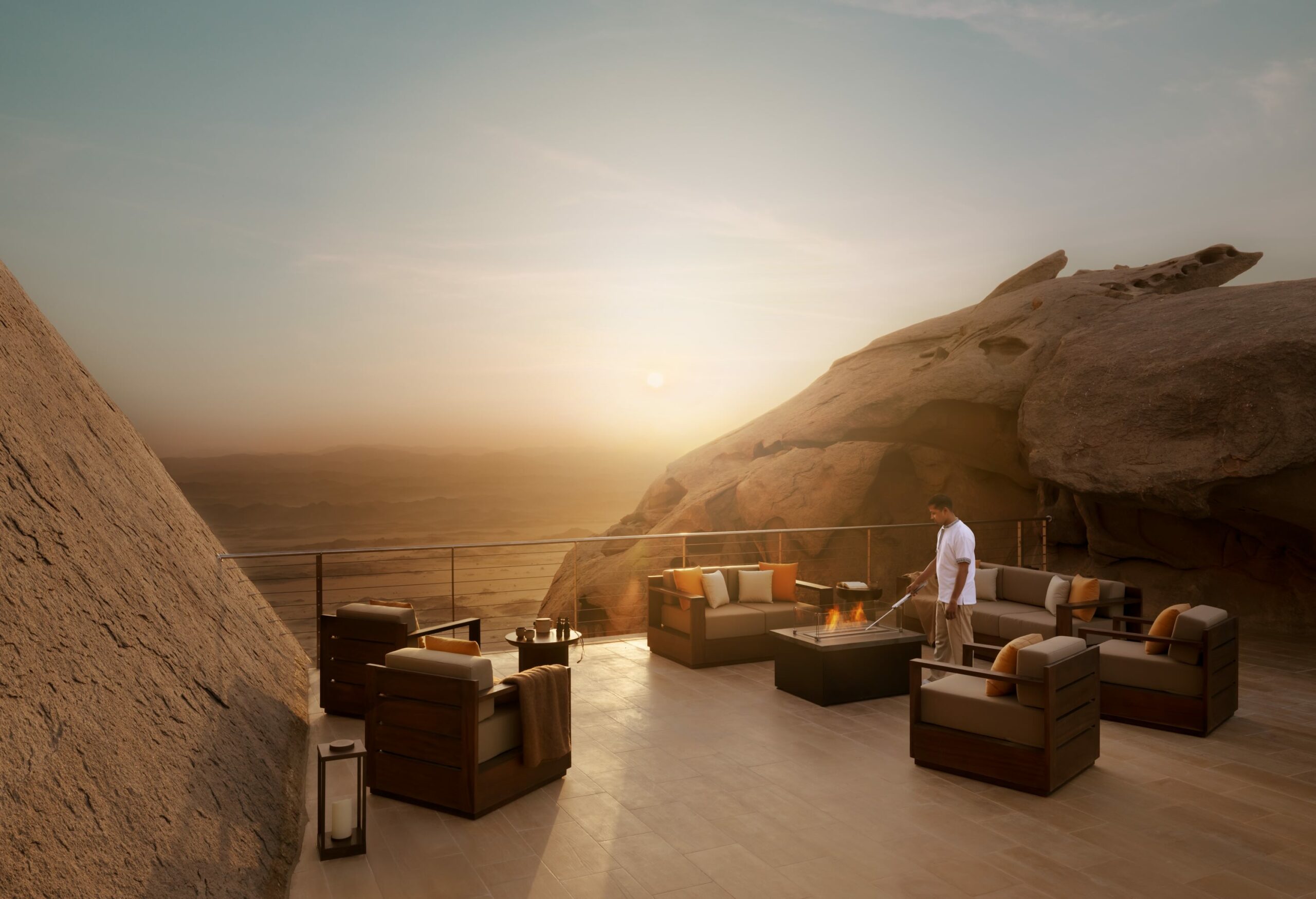
A spa sanctuary in the sands
Inspired by the desert and ancient wellness traditions, the spa at Desert Rock uses products from renowned UK brand AMRA and the Swiss Dr. Burgener. Located at the base of the massif, the triangular spa’s serene setting enhances the deep relaxation found in each of the seven treatment rooms. The signature treatment is the Moonlight Meteorite Mass, which blends specialised techniques with the rejuvenating power of meteorite extracts rich in minerals. A sauna, steam room and expansive wet area replete with bubbles, fountains, vitality pools and massage jets extend the experience beyond the massage table, enforcing guests to linger.
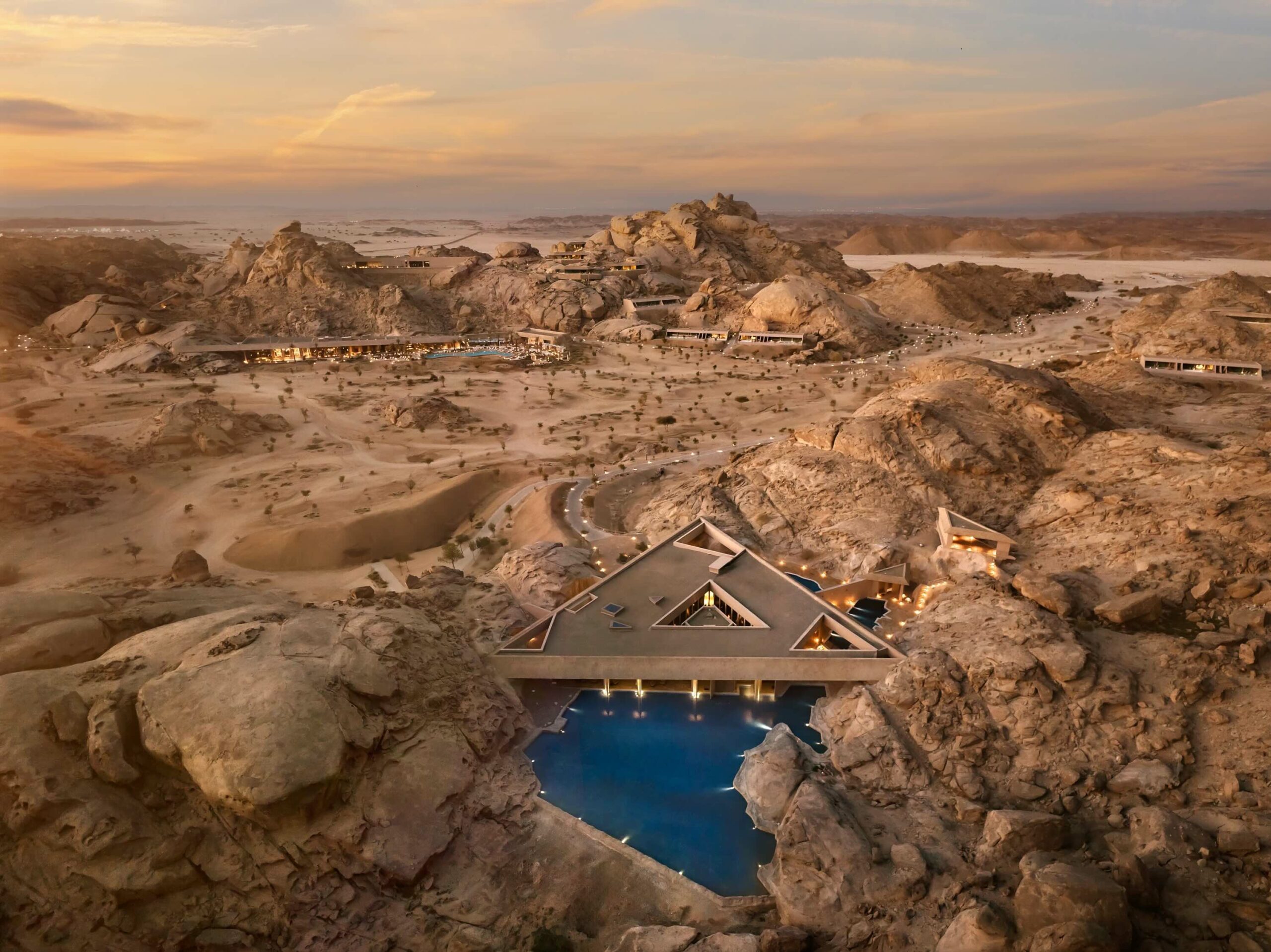
The verdict
Desert Rock’s architecture pays tribute to the Nabataean civilisation, which inhabited the area thousands of years ago. The Nabataeans were renowned for their engineering skills and their ability to carve magnificent structures into stone—a tradition still visible in AlUla today. Desert Rock’s design echoes this ancient tradition, creating a connection to the region’s rich history.
Construction of the resort began in 2018, and it is believed these mountains were originally beneath the waters of the Red Sea. While not all rooms offer the cave-dwelling that the resort’s marketing materials would suggest (only the ten suites are actually carved into the rock), you will definitely need your riyals ready as Desert Rock is a pricey stay (rooms currently start at SAR 8,500 per night).
Desert Rock offers a rugged retreat where soft luxury is front and centre, but an adventurous edge provokes curiosity. With the opportunity to explore the diverse flora and fauna of the desert or the celestial wonders of the night sky, it’s the Saudi hafawa (hospitality) that really shines through.
GO: Visit www.desertrock.sa for reservations and more information.


